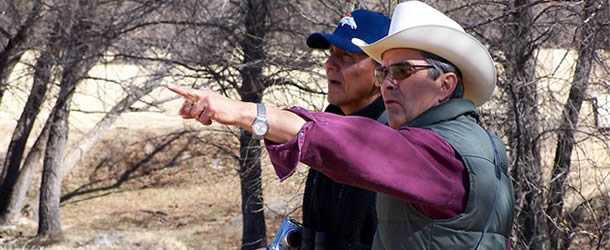![]() The latest edition of the North American Bird Conservation Initiative’s (NABCI) All Bird Bulletin has a special focus on exploring the human dimensions of bird conservation. “Human dimensions” is a broad term that basically refers to the social side of conservation: What do people think and feel about different issues? How do they behave? What influences them? Where do they get their information? Why do they make the decisions they do? And ultimately, how do their beliefs and behavior impact birds and habitat on the ground, and how can we work with people to achieve our conservation objectives?
The latest edition of the North American Bird Conservation Initiative’s (NABCI) All Bird Bulletin has a special focus on exploring the human dimensions of bird conservation. “Human dimensions” is a broad term that basically refers to the social side of conservation: What do people think and feel about different issues? How do they behave? What influences them? Where do they get their information? Why do they make the decisions they do? And ultimately, how do their beliefs and behavior impact birds and habitat on the ground, and how can we work with people to achieve our conservation objectives?
Ultimately, almost every conservation issue we face has people at the root. We either want people to stop doing something, to start doing something, or to keep on doing something. Without integrating human dimensions into our planning and implementation activities, we can never hope to fully achieve conservation success. As Natalie Sexton (USFWS Human Dimensions Branch Chief at the Natural Resources Program Center) says in her article in this special issue (p. 20), “Achieving effective management requires an intimate understanding of ecological processes and coordinated monitoring of populations and habitats. Equally important is an understanding of the societal landscape systems that both affect and are affected by management decisions.”
This special All Bird Bulletin examines the human dimensions of bird conservation from many angles. After an excellent overview of what is meant by the term “human dimensions,” we learn how international bird conservation initiatives like NABCI, Partners In Flight, and the North American Waterfowl Management Plan are incorporating people into their conservation priorities. Federal and State fish and wildlife agencies give their perspectives, as do non-profit organizations including National Audubon Society and Ducks Unlimited. We gain an international perspective from Canada, and academic researchers weigh in on the connection between birders, hunters, and conservation.
The special issue provides an excellent overview of the theme and gives both broad level and more concrete examples of the role of human dimensions in bird conservation. Download the complete issue here.

